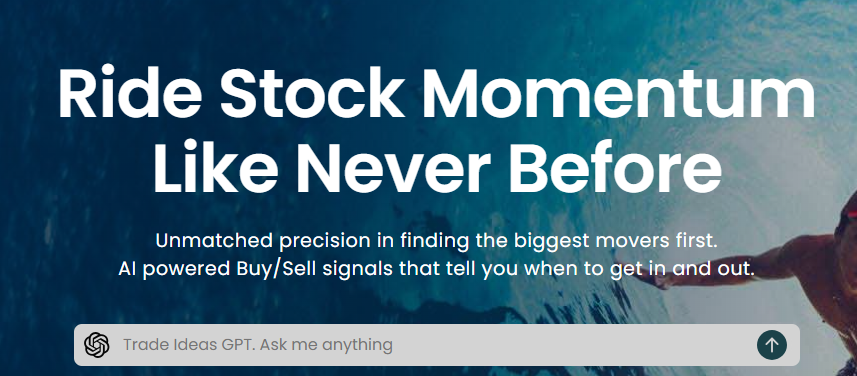Analyzing the quality of data and sources used by AI-driven stock prediction as well as trading platforms is essential to ensure reliable and accurate information. A poor quality data source can result in incorrect forecasts as well as financial losses, and a lack of trust of the platform. Here are 10 top tips on evaluating the quality of data and the sources it comes from.
1. Verify the sources of data
Find out where the data came from: Be sure to choose reputable and well-known data providers.
Transparency: The platform should be transparent about its data sources and update them regularly.
Avoid dependency on one source: Trustworthy platform often aggregate data across multiple sources in order to limit the chance of errors and bias.
2. Check the Freshness of Data
Real-time data is different from. data delayed Find out if your platform has real-time or delayed data. Real-time information is essential to ensure that trading is active. The delayed data is sufficient to provide long-term analysis.
Verify the frequency of updating information (e.g. hourly minutes by minutes or even daily).
Historical data accuracy - Ensure that all historical data are constant and do not have gaps or irregularities.
3. Evaluate Data Completeness
Search for missing data. Look for gaps in historical data, missing tickers and incomplete financial statements.
Coverage: Ensure the platform is able to cover a broad variety of indices, stocks, and markets that are relevant to your strategy for trading.
Corporate actions: Check if your platform is able to take into account dividends and stock splits as well as mergers and other corporate events.
4. Accuracy of Test Data
Data consistency can be guaranteed by comparing the data on the platform with other reliable sources.
Error detection: Search for price errors, mismatched financial metrics or other outliers.
Backtesting using historical data for backtesting trading strategies to check if the results match expectations.
5. Measure Data Granularity
The level of detail The platform provides granular information like intraday prices, volume, spreads between bid and ask, as well as depth of the order book.
Financial metrics - Make sure to check if there are detailed financial statement (income statements or balance sheets, cash flows) and key ratios included (P/E/P/B/ROE and so on.). ).
6. Check Data Cleaning and Processing
Normalization of data is crucial to ensure consistency.
Outlier handling: Find out how the platform handles outliers or anomalies that are in the data.
Incorrect Data: Check whether the platform uses reliable methods in order to fill in data points that are missing.
7. Examine data consistency
Timezone alignment: Align data according to the same timezone to avoid differences.
Format consistency: Ensure that data is presented in the same format.
Cross-market consistency : Verify data Harmonization across various exchanges or markets.
8. Evaluate the Relevance of Data
Relevance to your trading strategy Check that the information corresponds to your style of trading (e.g. quantitative modeling or quantitative analysis, or technical analysis).
Selection of features : Make sure the platform includes features that are relevant and can improve your predictions.
Examine the integrity and security of your information
Data encryption: Ensure the platform uses encryption to protect information during storage and transmission.
Tamper proofing: Make sure that the data on the platform is not being altered.
Compliance: Check to see if the platform adheres to laws regarding data protection.
10. Transparency of the AI model's performance on the Platform is verified
Explainability: Ensure the platform provides insights into how the AI model uses the data to make predictions.
Check if there is a bias detection feature.
Performance metrics: Determine the reliability of the platform through analyzing its performance history, metrics as well as recall metrics (e.g. precision or accuracy).
Bonus Tips
Reputation and reviews of users Review the feedback of users and reviews in order to assess the reliability of the platform and the data quality.
Trial period: Test the platform free of charge to test the functionality and what features are available before committing.
Support for customers: Make sure that the platform provides a dependable customer support to assist with data-related questions.
Following these tips will enable you to evaluate the data quality, source, and accuracy of AI-based stock prediction platforms. View the best ai investing hints for website info including best ai for trading, ai for trading, best ai for trading, ai stock market, ai trading tools, using ai to trade stocks, ai investment app, ai stock trading app, ai investment app, best ai for trading and more.

Top 10 Tips On Risk Management Of Ai Trading Platforms That Predict/Analyze Stock Prices
Any AI stock-predicting/analyzing trading platforms must include risk management which is vital to safeguard your capital and minimizing losses. A platform with robust tools for managing risk can aid in the navigating of unstable markets and help you to make educated choices. Here are the top 10 tips for assessing risk management capability of these platforms.
1. Evaluating Stop-Loss or Take-Profit Features
Customizable settings: Make sure you have the ability to set the take-profit or stop-loss level for a specific trade.
Check if you can use trailing stops. These automatically adjust when the market moves towards your advantage.
Stop-loss guarantee: Check to find out if the platform offers stop-loss guarantees, which will ensure that your position will be closed at a specific price even in volatile markets.
2. Instruments for assessing position Size
Fixed amount: Make sure that the platform lets you determine the size of your position based on an amount that is fixed in monetary terms.
Percentage: See whether you can define your position sizes as percent of the total amount of your portfolio. This will allow you to manage risk in a proportional way.
Risk-reward Ratio: Verify that the platform permits setting individual risk-reward levels.
3. Check for Diversification Support
Multi-assets trading: Verify that the platform can support trading across a variety of asset classes (e.g. stocks, ETFs options, forex etc.) to diversify portfolios.
Sector allocation Check to see if there are tools available for managing and monitoring sector exposure.
Diversification in geography. Find out if your platform allows you to trade on international markets. This can assist in spreading the risk of geographic.
4. Review margin and leverage controls
Margin requirements - Ensure that the platform clearly explains margin requirements clearly.
Find out if your platform lets you set leverage limitations to limit the risk of exposure.
Margin calls: Check if you get timely messages from the platform to prevent account liquidation.
5. Assessment Risk Analytics and reporting
Risk metrics: Ensure that the platform provides key risk metrics to your portfolio (e.g. Value at Risk (VaR), sharpe ratio, and drawdown).
Analysis of scenarios: Make sure that the platform is able to simulate different scenarios of the market in order to evaluate the risk.
Performance reports: Make sure the platform gives you detailed reports on performance, as well as returns that are risk adjusted.
6. Check for Real-Time Risk Monitoring
Portfolio monitoring: Make sure that the platform offers live monitoring of your portfolio's risk exposure.
Alerts and notifications: Examine the platform's ability to provide immediate warnings about risksy events (e.g. breaches of margins or stop loss triggers).
Risk dashboards: Ensure that the platform has customizable risk dashboards to give you a full overview of your risk profile.
7. How do you evaluate Stress Testing & Backtesting
Test your strategies for stress: Ensure that the platform you select allows the testing of your portfolio and strategies under the most extreme conditions of the market.
Backtesting: Check that the platform supports backtesting strategies using previous data to assess risk and performance.
Monte Carlo Simulations: Check whether the platform uses Monte Carlo simulations in order to model and assess the possible results.
8. Assessment of Compliance with Risk Management Regulations
Compliance with regulatory requirements: Ensure that the platform meets the relevant risk management regulations in Europe and the U.S. (e.g. MiFID II).
Best execution: Check if the platform follows the highest standards of execution, and ensures that transactions are executed at the highest prices to avoid the chance of slippage.
Transparency - See if the platform discloses the risks in a clear and open and transparent manner.
9. Examine the parameters of risk that are user-controlled.
Custom Risk Rules: Ensure that you have the ability to create custom rules for risk management (e.g. a maximum daily loss, a certain size of a tradable position).
Automated risk management: Make sure that the platform is able to enforce the risk management guidelines automatically, based on your predefined guidelines.
Manual overrides: Make sure that the platform supports manual overrides in emergency situations.
Study Case Studies and User Feedback
User feedback: Use user reviews to determine the platform's capacity to take care of the risk.
Case studies or testimonials should demonstrate the platform's ability to handle risks.
Community forums - Look to see if the website has a community for users that is active, and where traders are able to share their strategies for managing risk.
Bonus Tips
Trial period: Use a free trial or demo to try out the features of the platform for risk management in real-world situations.
Customer support: Make sure the platform provides robust support for any queries or concerns related to the management of risk.
Check for educational sources.
These guidelines will allow you to determine the risk management capabilities of AI stock-predicting/analyzing trading platforms. In this way you can select a platform that protects your investment and reduces the risk of losses. It is vital to have robust risk-management tools to be able to navigate the volatile markets. Have a look at the top rated ai software stocks url for site advice including trading ai tool, stock trading ai, ai investment tools, best stock prediction website, ai stock analysis, how to use ai for copyright trading, chart ai trading, best ai trading platform, ai copyright signals, ai stock predictions and more.
